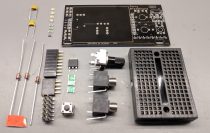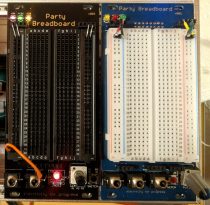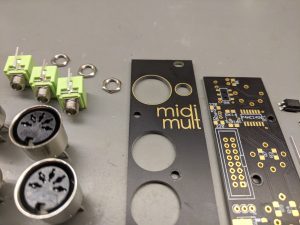| Project Name | Boards | Parts | Notes |
| MIDI Filter 1U – Knob Lights | 5 | 1 built, 4 pots, need 5v ProMicro | Limited run |
| MIDI Filter 1U – Regular | 5 | 5v Pro Micro | |
| MIDI Filter 2HP | 5v Pro Micro | Board and face revision 3 ** | |
| Party FM | — | 3v Pro Micro, etc | finalize design |
| Party Breadboard 1U | fuses | ||
| Party Breadboard | |||
| Party MPC | — | Board and face revisions, mechanical stress, | |
| Party In Party Out | — | New Project for line level I/O for fx | |
| Party Gates (1U and full) | — | Some boards on hand, are they usable? | Finalize design for buttons, menus and modes |
| Party Button 1U Passive | 10 | Bournes x3 trimmer, thonks, Button and LED options/reversee | review front panel for both sizes |
| Party Button 1U RGB | 10 | ATtiny85’s, neopixels, buttons | review front panel for both sizes |
Category: Synths and Modular
Party FM
PartyFM Eurorack Radio Module

The PartyFM is a minimal FM radio module in Eurorack format. Implemented using the RDA5807M chip and library set this module:
- outputs mono
and stereo audio– force Mono - allows muting and tuning via CV input
- expansion for antenna? Heck yeah
- Unit changes the radio station based on CV changes
- Knob with rgb LED and button
- allows coarse and fine tuning (press and hold button while turning, or press for modes).
- Tuning might not be smooth, and could be digital and jarring (testing!!)
- turn off ‘softmute’ which mutes weak signals
- Panic reset function?
Hardware using Arduino proMicro brain and generic breakout board with RDA chip and crystal, neopixel led indicator, selection knob, and tactile switch. CV Tuning input, Mute Gate input (L/R), output L/R, stereo indicator led.
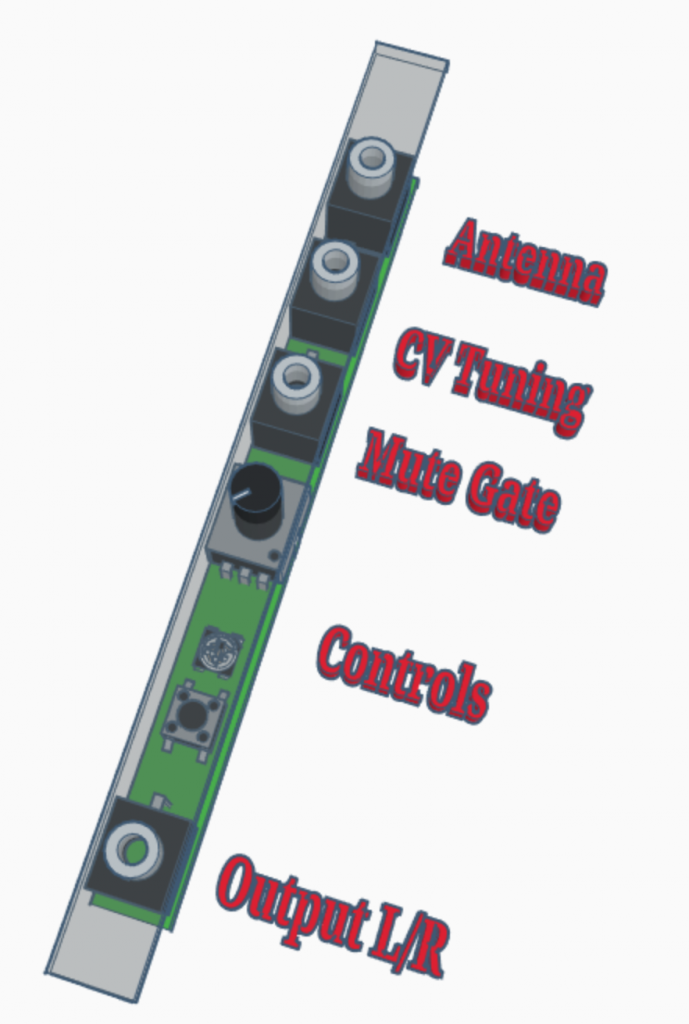
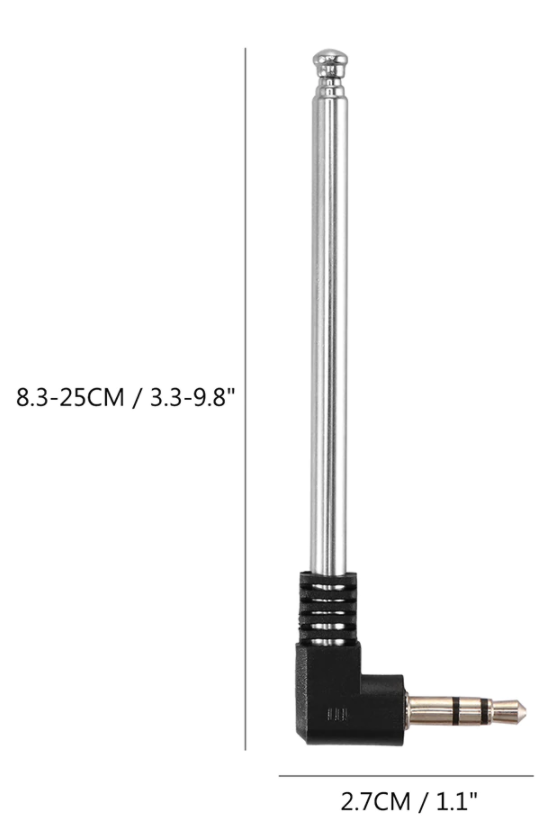
API sourced from marthertel.de
http://mathertel.github.io/Radio/html
Choose the chip you have in your setup and see what functions the library supports.
| Feature | TEA5767 | RDA5807M | SI4703 | SI4705 | ||
| RADIO | band = FM | X | X | X | X | |
| band = FMWORLD | ||||||
| freq | X | X | X | |||
| mono | X | X | X | X | ||
| stereo | Decode stereo signal | X | X | X | X | |
| RSSI | signal strength indicator | 0 – 64 | ||||
| softmute | X | X | X | |||
| mute | X | X | X | X | ||
| Seek | ||||||
| FM Grid | 50 kHz | |||||
| Audio | volume | Supported number of volume levels | 0 – 15 | 0 – 15 | 0 – 63 | |
| bassboost | Boost bass frequencies | X | – | – | ||
| RDS | Data | Decode RDS signal | – | X | X | X |
| Errors | Provide information on RDS signal errors | – | – | X | X |
Party Breadboard 1U
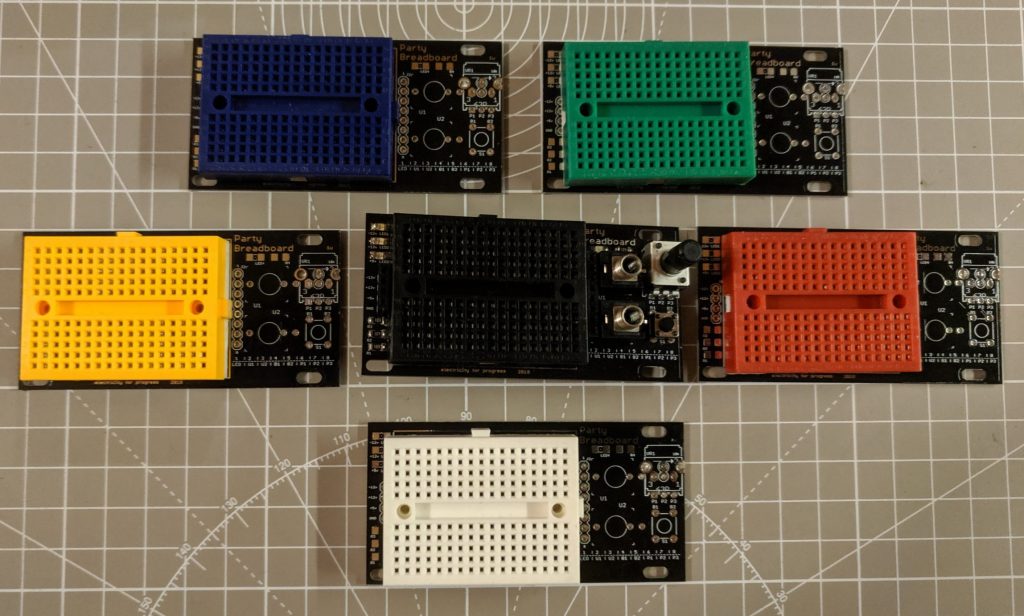
The same great prototyping experience of the full sized Party Breadboard, in super cute 1U format! Use this to spin up a quick schmidtt-trigger or 555 timer oscillator, try out a distortion circuit, or pop in a bunch of LEDs for a blinkenlight party! Available in both Pulp Logic and Intellijel formats, this board is made to fit many skiff. Purchase the Party Breadboard 1U in my store, and checkout the full sized Party Breadboard!
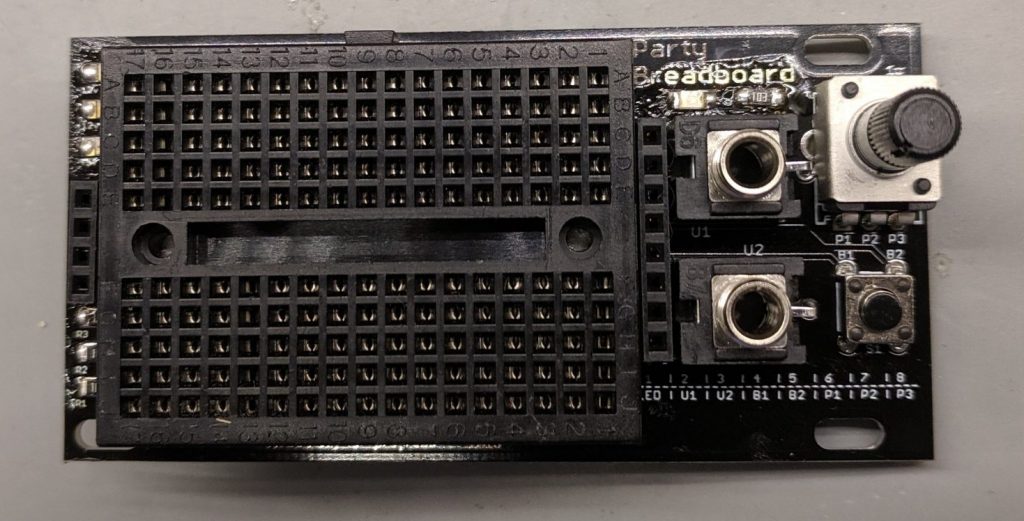

In this DIY build users have a variety of I/O options. The included three 3.5mm jacks easily allows signals to be patched across other modules. Along with an onboard indicator LED, the board also has footprints for a variety of mini and 9mm potentiometers, allowing many different trimmer and small pots to be used. Finally a tactile switch sits to the bottom right corner.
Each of the I/O can be interfaced using the 8 pin jumpers at the right of the breadboard with pin1 connected to the LED, U1/U2 connected to the tip of each jack (the sleeve is grounded), B1/B2 attached to each side of the tactile button and P1/P2/P3 connected to the wiper and ends of the potentiometer. A small legend for the pin connections is printed at the bottom of the module.

Power is provided on the back by a 10 or 12 pin connector, this should be a surface mount male header and you may need to ‘clip’ the small plastic tabs on header. The 5v rail can be engaged by closing the SJ1 jumper and including a 7805 regulator, or you can use 5v provided by the main skiff power supply using a 12 pin header. I tend to regulate my own 5v on each module, considering it is usually used for microcontrollers and sensitive devices. For protection there are include PTFE fuses on all three power rails (-12v,+12v,+5v) in order to manage short circuits and zener diodes to dump excess voltages.
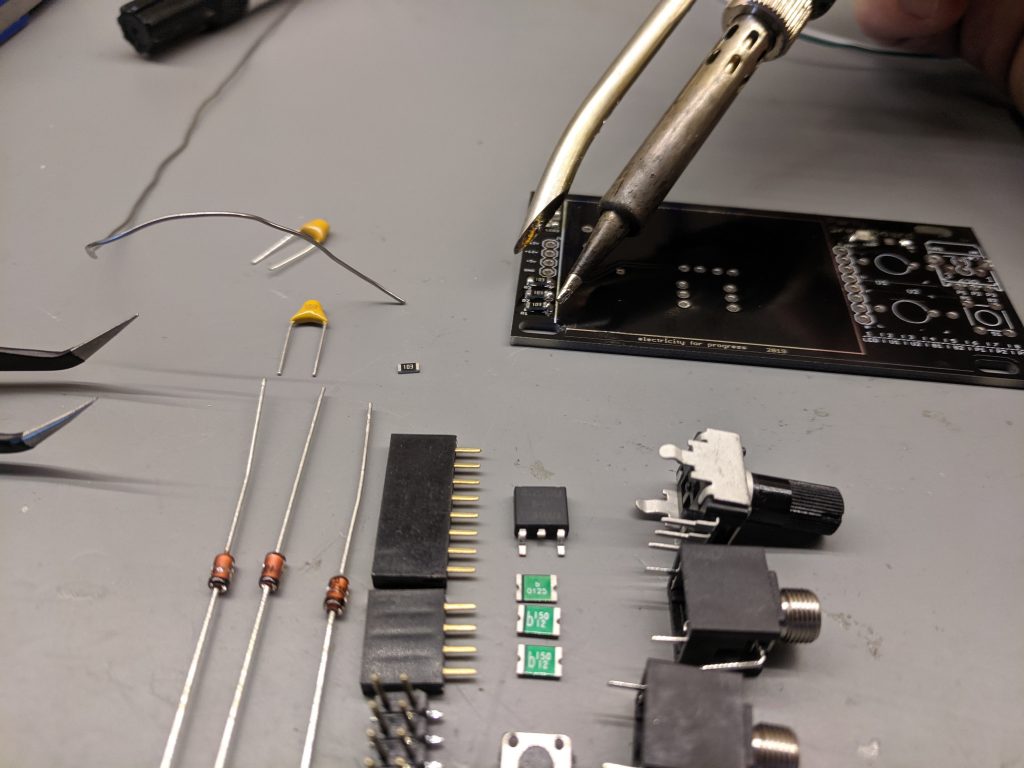
The LEDs on the front panel each have their cathode (negative/flat side) towards the right side edge from the front face of the panel, the LEDs go through the current limiting resistors and then to ground. Resistor values can be chose to taste, many prefer very dim LEDs for their modular systems (especially ‘always on’ indicators), I use a 10k trimmer pot to test the brightness of the LEDs before installation into the board… testing and choosing the indicator LED brightness is a great first project to use the Party Breadboard! Indicator LEDs 4/5 allow two different color LEDs to be set with opposite polarity and makes it easy for a user to view the rough voltage (brightness) and polarity (color) of a CV signal.
Diodes D1 and D2 are 12v zener with D3 being 5.1v. Similarly F3 is a 5v fuse and F1/F2 are 12v fuses. The 7805DT regulator is a SMD package, but any 5v regulator could be hacked on, be sure to close Jumper SJ1 with a piece of wire to power the 5v regulator! Two capacitors are included to clean up the power lines around the regulator, if you are using 5v from the modular case then these caps can be excluded as well as exclude the 7805 and leave SJ1 jumper open.
This Schematic shows the simple routing from the jumper points and the power connections.
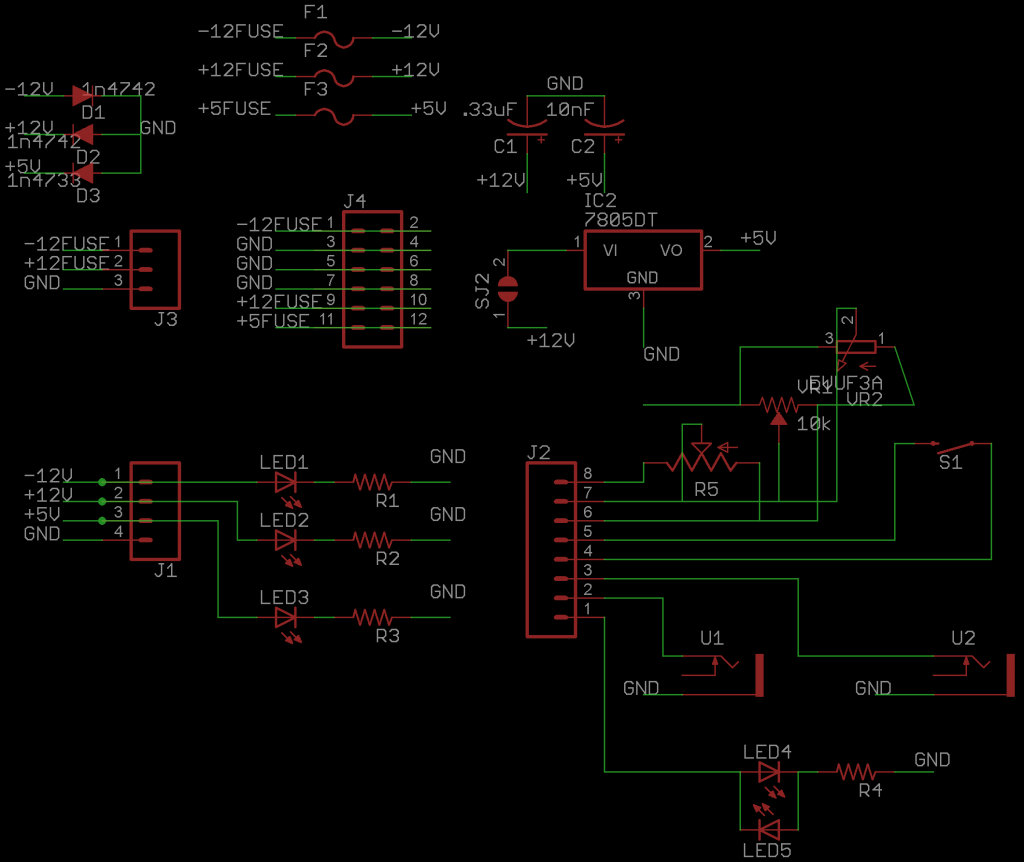
Party Breadboard

The Party Breadboard v002 is an electronics prototyping platform built into a 12hp (60.6mm) wide Eurorack format, allowing the exploration and design of custom circuits to expand a Modular Synthesis environment. When creating a new module or whipping up a quick LFO or blinkenlight, nothing makes the process easier than an integrated prototyping breadboard! Purchase the Party Breadboard in my store. Also available in super cute 1U format for Pulp and Jel systems!
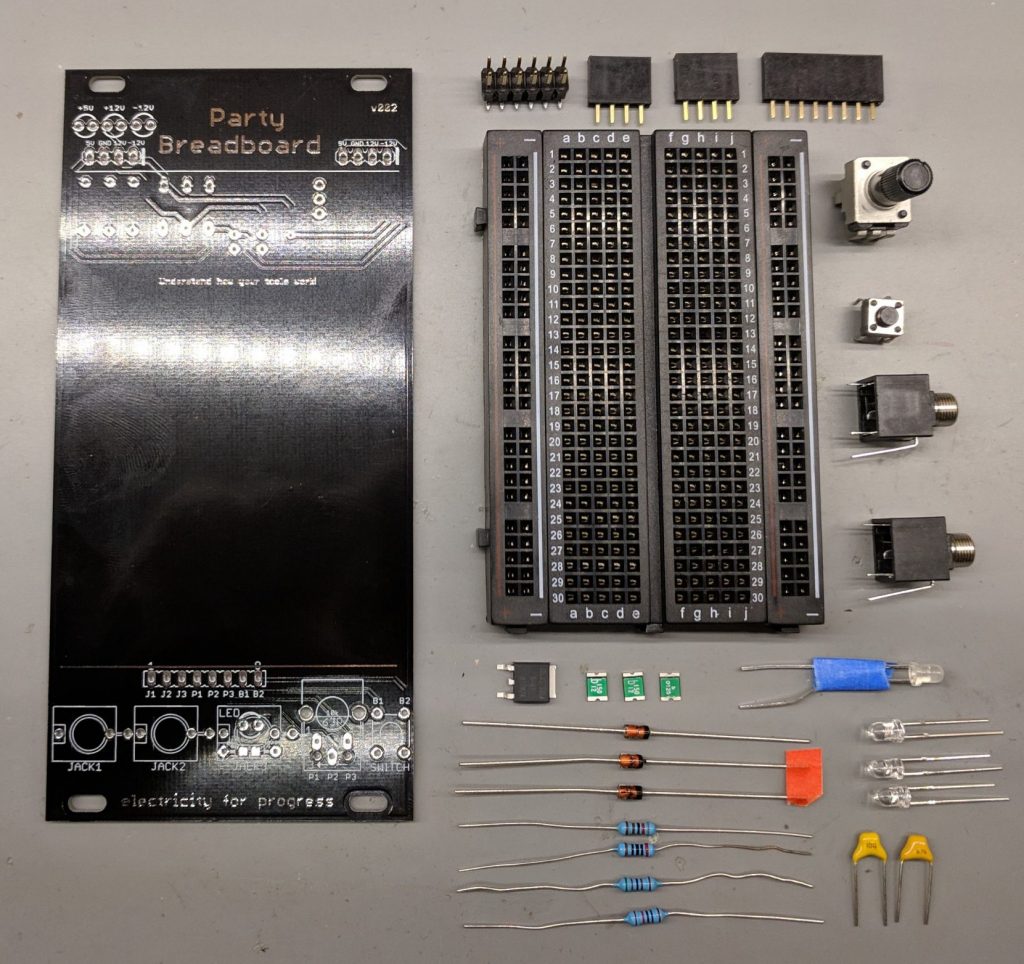
Printable-Instructions https://docs.google.com/document/d/1t_eVLtVa8f25B5C8VLIUo2R9oE2Kq5l0Wpl25trGX6w/edit?usp=sharing
In this DIY build users have a variety of I/O options. The included three 3.5mm jacks along the bottom of the module easily patch signals to and from other modules, or one of the jacks can be exchanged for an indicator onboard LED! The board also has footprints for a variety of mini and 9mm potentiometers, allowing many different trimmer and small pots to be used. Finally a tactile switch sits to the bottom right corner.
Each of the I/O can be interfaced using the 8 pin jumpers at the bottom of the breadboard with J1/J2/J3 being the tip of each jack (the sleeve is grounded), P1/P2/P3 connected to the wiper and ends of the potentiometer, and B1/B2 attached to each side of the tactile button.

Power is provided on the back by a 10 or 12 pin connector, this should be a surface mount male header and you may need to ‘clip’ the small plastic tabs on header. The 5v rail can be engaged by closing the SJ1 jumper and including a 7805 regulator, or you can use 5v provided by the main skiff power supply using a 12 pin header. I tend to regulate my own 5v on each module, considering it is usually used for microcontrollers and sensitive devices. For protection there are include PTFE fuses on all three power rails in order to manage short circuits and zener diodes to dump excess voltages.
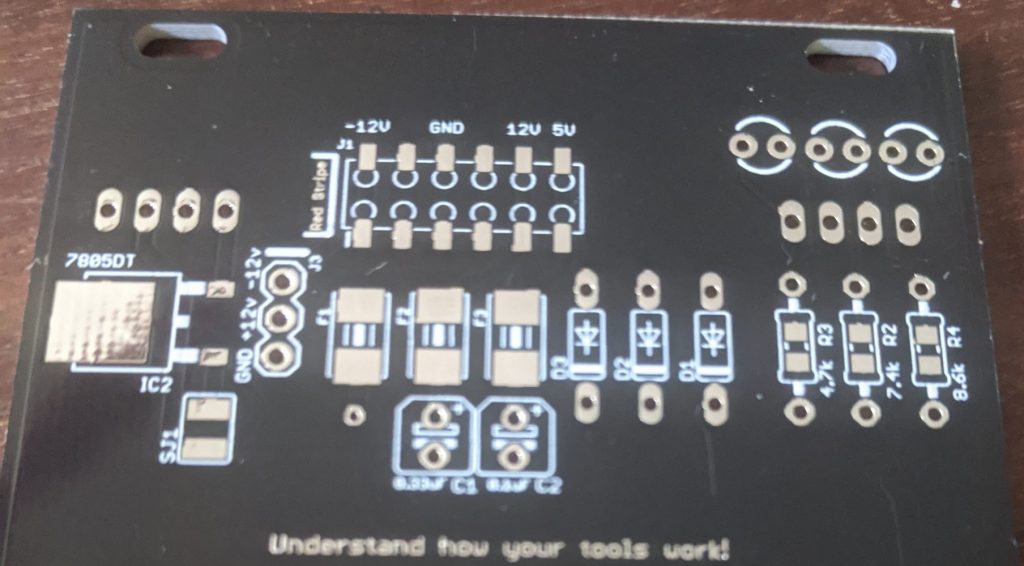
The LEDs on the front panel each have their cathode (negative/flat side) towards the right side edge from the front face of the panel, the LEDs go through the current limiting resistors and then to ground. Resistor values can be chose to taste, many prefer very dim LEDs for their modular systems (especially ‘always on’ indicators), I use a 10k trimmer pot to test the brightness of the LEDs before installation into the board… testing and choosing the indicator LED brightness is a great first project to use the Party Breadboard! Diodes D1 and D2 are 12v zener with D3 being 5.1v. Similarly F3 is a 5v fuse and F1/F2 are 12v fuses. The 7805DT regulator is a SMD package, but any 5v regulator could be hacked on, be sure to close Jumper SJ1 with a piece of wire to power the 5v regulator! Two capacitors are included to clean up the power lines around the regulator, if you are using 5v from the modular case then these caps can be excluded as well as exclude the 7805 and leave SJ1 jumper open.
This Schematic shows the simple routing from the jumper points and the power connections.
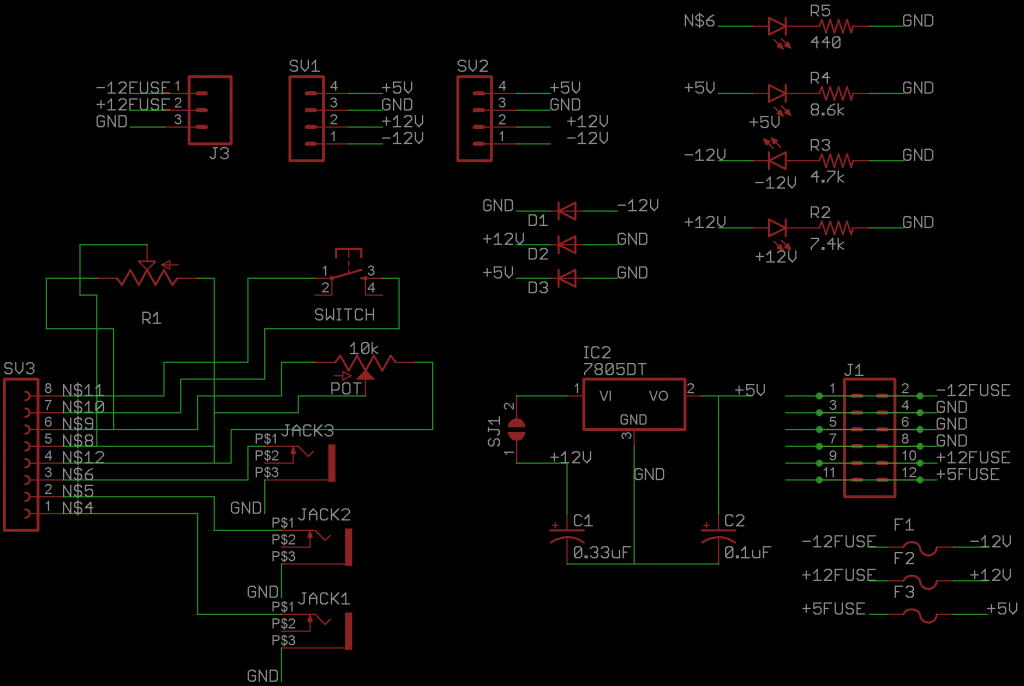
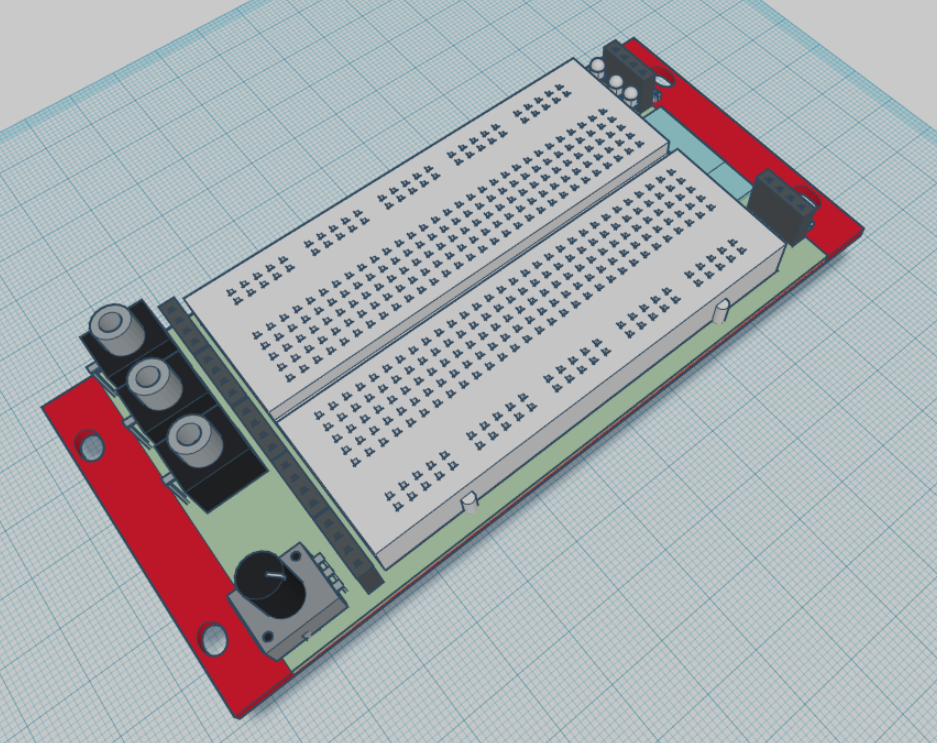
Tinkercad design for Party Breadboard
I like to draw up my modules in CAD in order to make sure everything fits between the rails, and to test out orientation of components. I created my own parts for the Pot, Thonk-style 3.5mm vertical jack, and the breadboard and LEDs I found in the Tinkercad.com library. https://www.tinkercad.com/things/gJaaTd4QUVj-party-breadboard-12hp/
MIDI Mult
MIDImult – Route a single MIDI source from the top input jacks to four separate MIDI devices. Includes MIDI 5pin DIN jacks and accompanying (polarity switchable for TypeA and TypeB) 3.5mm jacks on Input and Outputs 3/4, allowing connection to Eurorack and other modern MIDI gear. This is a simple implementation of a 74HC14 MIDI Thru 1 x 4 circuit in Eurorack format. This unit is available on my Store fully assembled or as a kit, note the SMD parts are small but doable for an experienced builder.


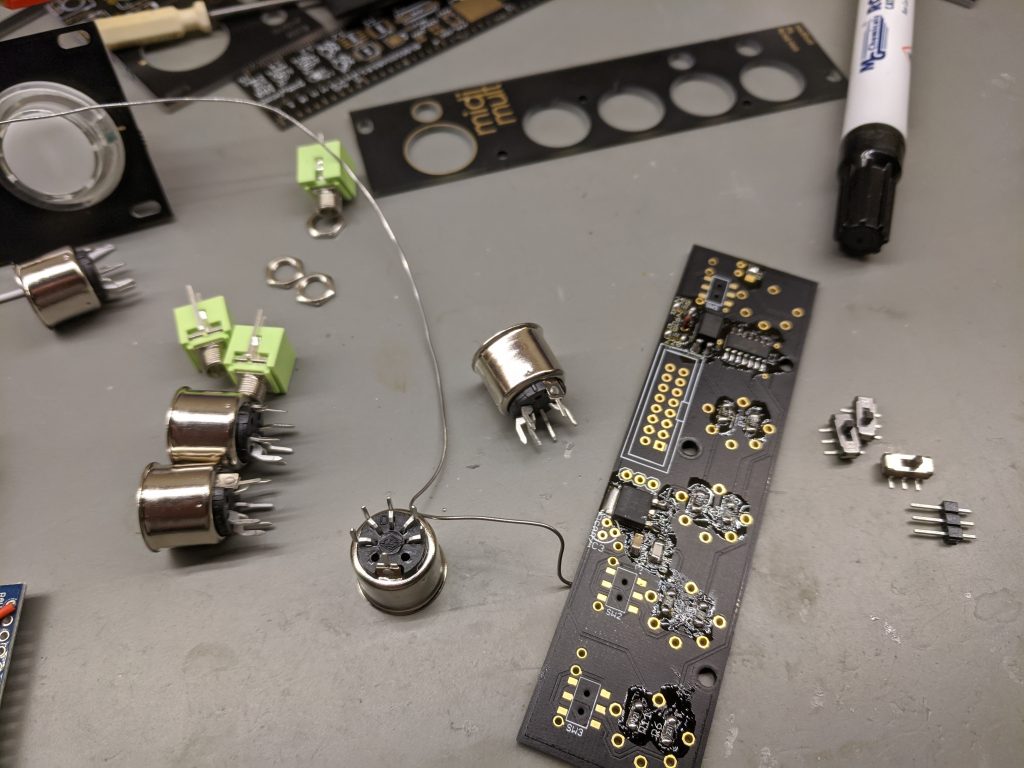

Welcome to Electricity for Progress
Hello, my name is Sam Cusumano and welcome to Electricity for Progress. Today we will begin to explore a new installation of wordpress in an attempt to rebuild a website featuring my historical and current work with Electronics, Education, and Music. Please follow along and enjoy the content.



